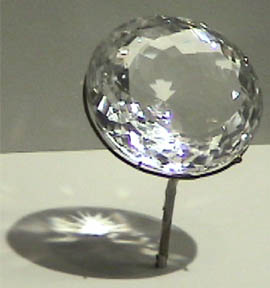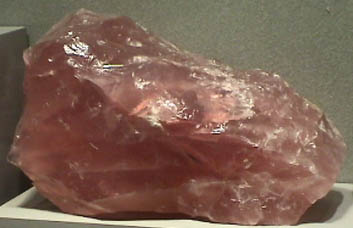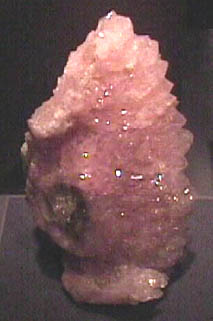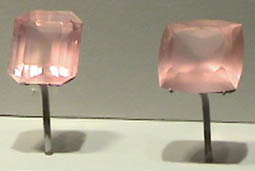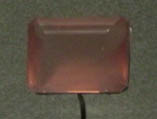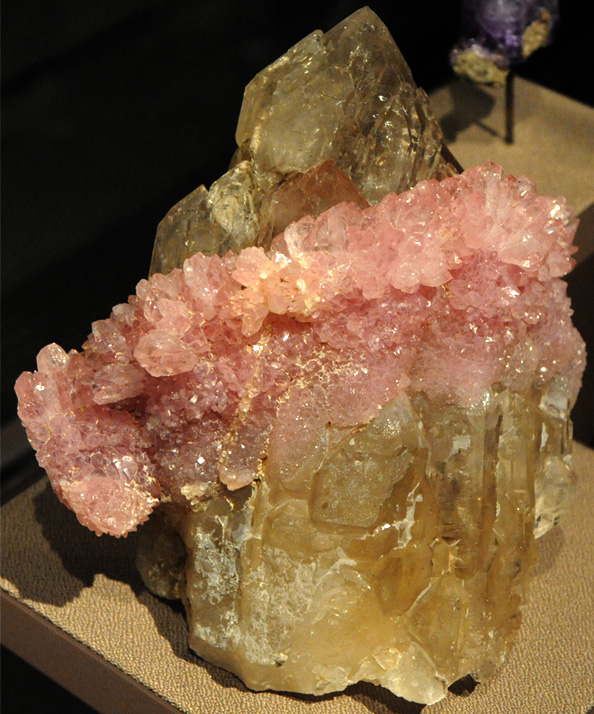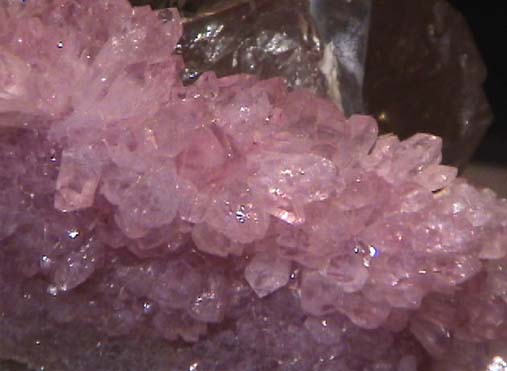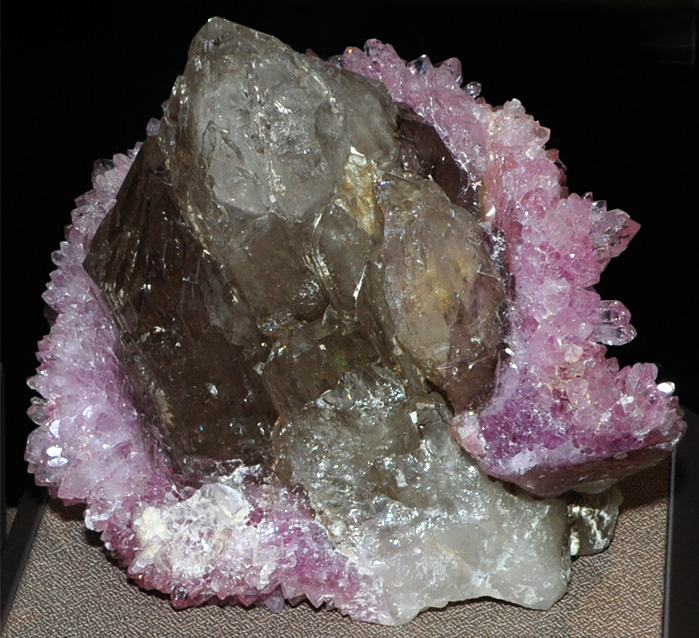Quartz
| 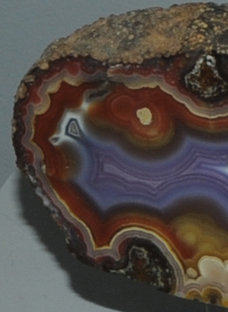 This section of agate quartz is displayed at about actual size. Quartz is typically characterized by a density of about 2.65 gm/cm3, an index of refraction of about 1.54-1.55, and a hardness of about 7 on the Mohs hardness scale. |
Clear crystal quartz forms naturally when silica rich solutions occur in underground cavities and fractures where conditions will allow unobstructed growth. The smooth planar surfaces reflect the symmetry of the crystal lattice, but do not represent cleavage planes. When the hexagonal symmetry is exhibited by the crystals, it represents the pattern formed by unobstructed growth.
 Smoky Quartz |  Citrine Quartz |  Ametrine Quartz |  Clear Quartz |
 Agate Quartz |  Chalcedony Quartz |  Jasper Quartz |  Onyx Quartz |
 Sardonyx Quartz |  Bloodstone Quartz |  Chrysoprase Quartz |  Flint Quartz |
| Minerals |
| Selection of common minerals |
| HyperPhysics***** Geophysics | R Nave |
